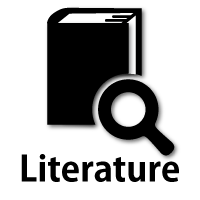Muscle biopsy
Protocol for muscle biopsy and tissue processing for histopathological studies
Selection of the biopsy site is crucial for correct diagnosis. In addition to clinical assessment of muscle strength and volume, it is useful to perform CT and MRI of the muscles being biopsied. MRI is useful to determine the biopsy site in inflammatory myopathies, including granulomatous myopathy such as sarcoidosis. Muscles with mild disease are suitable for biopsy because they are most likely to show characteristic histopathological features. Clinicians must strictly avoid severely atrophied muscles because they usually show non-specific findings common in advanced- loss of muscle fibers. Although nEMG is a useful tool, it is advisable to avoid the sites examined with the needle when obtaining muscle tissue for biopsy. Muscle biopsy can be performed under general or local anesthesia in adults; however, general anesthesia is preferred in children. The anesthesiologist should be mindful of the risk of malignant hyperthermia in patients with suspected muscular dystrophy and congenital myopathy undergoing general anesthesia. Local anesthesia is used for skin and fascia, but not for the muscle itself to avoid anesthetic-induced tissue injury.
An open biopsy is a procedure in which an incision is made in the skin to identify and expose the muscle and obtain tissue for biopsy. This technique allows the operator to check the amount of bleeding after resection of the specimen. It can be performed through a small incision. Following this procedure, it is preferable to close the wound using techniques employed by plastic surgery. On resection, soaking the muscle tissue with blood should be avoided. If the specimen needs to be transported to a different laboratory before freezing, it should be wrapped in a sheet of moist (not wet) gauze and stored at a temperature around 4°C. For electron microscopy, ideally a part of the muscle is clamped in-situ with an isometric clamp while it is mildly stretched by a pair of forceps, before resection. The resected tissue in the clamp is then dropped into the fixative.
The specimen is divided into the following three blocks: (1) frozen block, (2) paraffin-embedded block and, (3) plastic-embedded block. From the frozen block, thin sections (8–10 μm in thickness) are cut using a cryostat. The technique used to freeze the specimen in liquid nitrogen and subsequent cutting using the cryostat is shown in the attached video.
Our laboratory uses the following stains for routine procedures: hematoxylin-eosin (HE), modified Gomori trichrome, nicotinamide adenine dinucleotide tetrazolium reductase (NADH-TR), periodic acid Schiff (PAS), succinic dehydrogenase (SDH), stains for non-specific esterase activity, cholinesterase activity, acid phosphatase activity, cytochrome C oxidase activity, and myosin ATPase activity after incubation at hydrogen ion concentration varying from pH 4.2 to 10.5, 4.2, 4.3, 4.5, 4.55, 4.6, 4.7, 10.3, 10.4, 10.5. Immunohistochemical staining is performed in patients with suspected muscular dystrophies or inflammatory myopathies. Paraffin-embedded specimens are cut and stained routinely with HE, Gomori trichrome, Azan, elastica van Gieson (Verhoeff Van Gieson elastin), and PAS stains.
Preparation of plastic-embedded blocks involves double fixing of tissues in glutaraldehyde followed by osmium tetroxide and embedding the tissue in epoxy resin after dehydration. Careful attention is required for appropriate orientation of the tissue fragments when embedding to ensure that transverse and longitudinal sections can be easily obtained. Semi-thin sections cut from the plastic-embedded blocks are stained with toluidine blue. The area selected in the semi-thin section is cut to produce ultrathin sections (70–90 nm in thickness), which are double stained with uranyl acetate and lead citrate.




